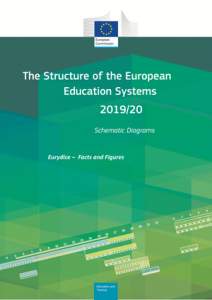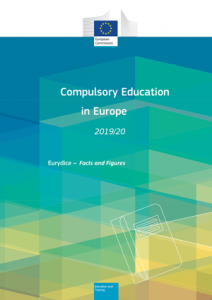indireinforma
Two new Eurydice reports on the structure of different education systems and compulsory education in Europe

How are education systems organised in Europe? what are the organisational models of primary and secondary education in Europe and how long does each educational level last? How do tertiary education programmes differ?
These questions are answered by two new reports of the Eurydice network dedicated to the structure of European education systems and compulsory education in Europe.
 In “The Structure of the European Education Systems 2019/20” it is possible to find out, for example, that there are three types of organisational models of lower primary and secondary education in Europe. The report includes a map that shows these models and national schematic diagrams accompanied by a reading guide.
In “The Structure of the European Education Systems 2019/20” it is possible to find out, for example, that there are three types of organisational models of lower primary and secondary education in Europe. The report includes a map that shows these models and national schematic diagrams accompanied by a reading guide.
 In “Compulsory Education in Europe 2019/20” synthetic information about the duration of compulsory education/training in Europe and on the age of students at the beginning and at the end of compulsory education are provided.
In “Compulsory Education in Europe 2019/20” synthetic information about the duration of compulsory education/training in Europe and on the age of students at the beginning and at the end of compulsory education are provided.
Data refer to the school year 2019/20 and are available for the 43 education systems of 38 countries participating in the programme of the European Union Erasmus+.
“The Structure of the European Education Systems 2019/20” >>
“Compulsory Education in Europe 2019/20” >>
What is Eurydice?
Eurydice is an institutional network that collects, updates, analyses and disseminates information on the policies, structure and organisation of the European education systems. Founded in 1980 on the initiative of the European Commission, the network consists of a central unit based in Brussel, and various national units. Since 1985, the Italian National Unit has been based at INDIRE.
Useful links:

